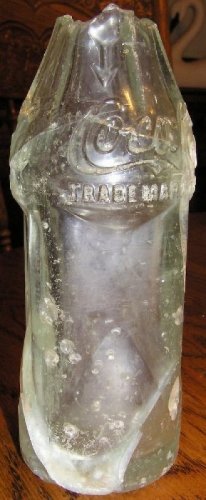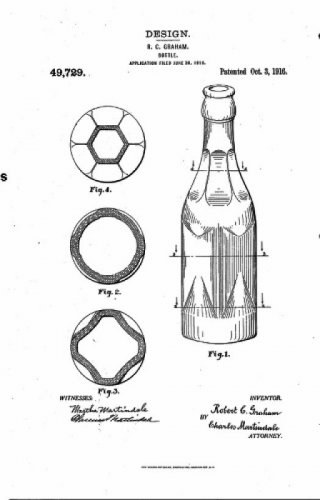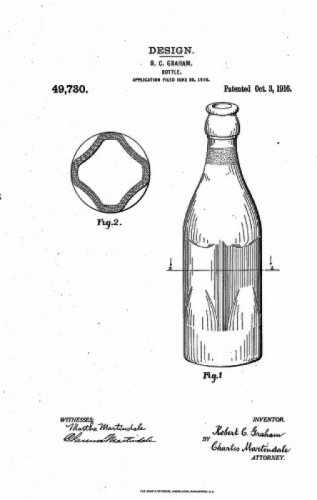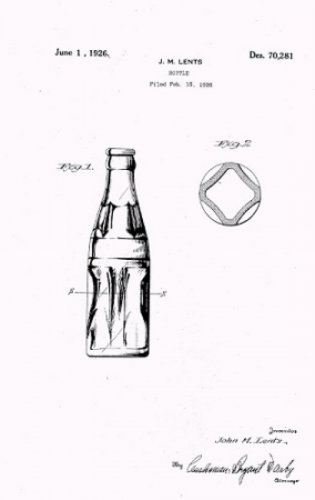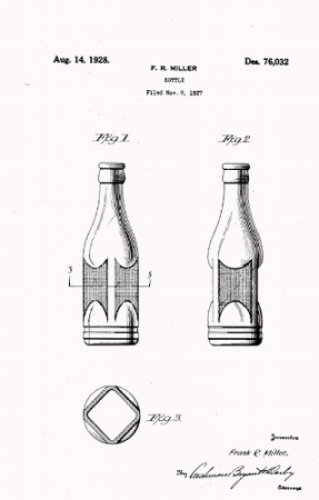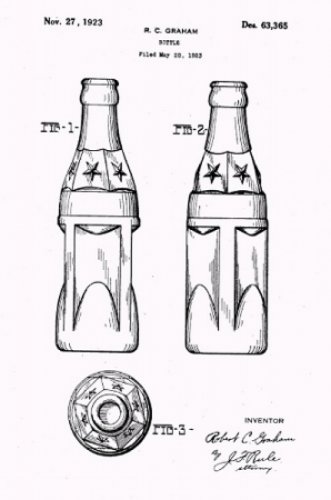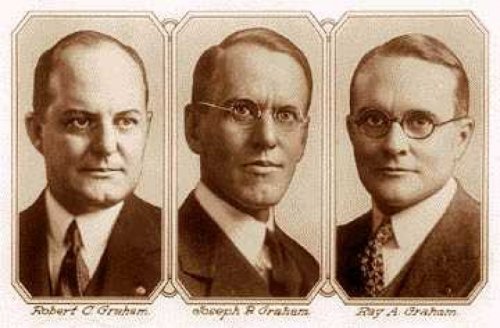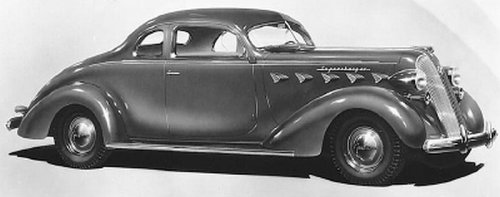SODAPOPBOB
Well-Known Member
- Joined
- Mar 10, 2010
- Messages
- 11,502
- Reaction score
- 49
- Points
- 0
This thread is a spin-off of my last thread which involved bottles from the 1916 Coca Cola convention ...
COCA COLA / 1915 PROTOTYPE / EARL R DEAN / RAY A GRAHAM
https://www.antique-bottles.net/forum/COCA-COLA-%2F-1915-PROTOTYPE-%2F-EARL-R-DEAN-%2F-RAY-A-GRAHAM/m-600389/tm.htm
~ * ~
My intent with this new thread is to focus specifically on the Graham Glass Company "Flavor Bottles," with the ultimate goal being to hopefully find answers to the following questions ...
PART ONE ~ IN SEARCH OF
1. Which glass company made the Coca Cola embossed flavor bottle pictured below?
(This bottle was first brought to our attention by member digdug and can be found on Page 5, Post 100 of my other thread).
2. Was the bottle pictured below ever patented / distributed, and if so by who?
~ * ~
I think it only proper to mention I have spent the past week researching this topic and have discovered there is a lot more to those so called "ordinary" flavor bottles than meets the eye. So the next time someone post what we normally think of as a "typical flavor bottle" and they ask for information pertaining to it, please keep this thread in mind because it might shed some new light on the subject.
Note: By "Flavor Bottle" I am referring specifically to the one's with what I call the bulbous base and shoulder and were used by most if not all of the Coca Cola bottlers between the mid-teens and the 1940s and 1950s.
It appears the earliest patent on this type of flavor bottle was secured by Robert C. Graham of the Graham Glass Company and patented in 1916. (Patent images to follow on subsequent pages). The reason I say "appears" is because there are so many variations of the patent that it gets a bit confusing as to the who-what- where-when of the design. The earliest patent I could find was the one from 1916 but similar patents (variations) can also be found during the early 1920s. I looked around on eBay and elsewhere and discovered that every flavor of this type that had information associated with it always listed the bottles with dates from the 1920s. Which brings us to ...
PART TWO ~ RESEARCH
1. Are there any flavor bottles of this type (Coca Cola or otherwise) that are dated 1916 through about 1920? If they exist I have yet to find a single example. The earliest I have found so far is a 1922.
2. I need your help and suspect the majority of us have a "bulbous" flavor bottle or two as they are fairly common and easy to recognize. Please check the one's you have and share with us "all of the marks" they contain. We'll figure out later what the marks might mean as it can be a bit confusing and complicated.
3. To familiarize yourself with the various Graham marks/codes, please access the following link and note the chronology on Page 7.
http://www.sha.org/bottle/pdffiles/TaleofTwoMachines_BLockhart.pdf
4. The following links contain brief information pertaining to the Graham Glass Company. Note the date on the first link stating that the Owens Company purchased the Graham Company on July 21, 1916.
http://xrl.us/bpd6uy
Graham / Owens ~ Brief history
http://xrl.us/bpdztm
~ * ~
Regarding some of the confusion I mentioned, I have seen examples of flavor bottles which look almost identical to one another but were made by different glass companies, including; Graham Glass ~ Owens-Illinois ~ Laurens Glass Works, and others. I have one of the later variations (which has the four stars on the shoulder) that has a 1916 Graham patent number on the heel but was made by Laurens Glass Works in 1948. It is marked with ...
PAT NO 49729
4LGW8
Most likely many of the flavor bottles, like my LGW example, are the result of one glass company acquiring/purchasing the rights to use that design from another glass company. Or perhaps they traded designs in some manner. I'm not sure yet just how all of that played out and would be interesting if someone found something explaining it.
~ * ~
To summarize / clarify
I am primarily looking for two things ...
1. Who patented / made the flavor bottle pictured below and when?
2. What is the earliest date that can be confirmed on these types of flavor bottles?
I realize that looking through a bunch of bottles can be a pain in the you-know-what, but because flavor bottles are easy to recognize it might not be as bad as we think. If you do have a flavor bottle you'd like to share, but not sure of the codes, please post it anyway and hopefully as a team we can figure it out.
Thanks in advance to everyone who participates in this search and/or follows it with interest ... and please have a Happy Fourth of July.
Sincerely,
Sodapopbob
Mystery Bottle ~ Who made it and when?

COCA COLA / 1915 PROTOTYPE / EARL R DEAN / RAY A GRAHAM
https://www.antique-bottles.net/forum/COCA-COLA-%2F-1915-PROTOTYPE-%2F-EARL-R-DEAN-%2F-RAY-A-GRAHAM/m-600389/tm.htm
~ * ~
My intent with this new thread is to focus specifically on the Graham Glass Company "Flavor Bottles," with the ultimate goal being to hopefully find answers to the following questions ...
PART ONE ~ IN SEARCH OF
1. Which glass company made the Coca Cola embossed flavor bottle pictured below?
(This bottle was first brought to our attention by member digdug and can be found on Page 5, Post 100 of my other thread).
2. Was the bottle pictured below ever patented / distributed, and if so by who?
~ * ~
I think it only proper to mention I have spent the past week researching this topic and have discovered there is a lot more to those so called "ordinary" flavor bottles than meets the eye. So the next time someone post what we normally think of as a "typical flavor bottle" and they ask for information pertaining to it, please keep this thread in mind because it might shed some new light on the subject.
Note: By "Flavor Bottle" I am referring specifically to the one's with what I call the bulbous base and shoulder and were used by most if not all of the Coca Cola bottlers between the mid-teens and the 1940s and 1950s.
It appears the earliest patent on this type of flavor bottle was secured by Robert C. Graham of the Graham Glass Company and patented in 1916. (Patent images to follow on subsequent pages). The reason I say "appears" is because there are so many variations of the patent that it gets a bit confusing as to the who-what- where-when of the design. The earliest patent I could find was the one from 1916 but similar patents (variations) can also be found during the early 1920s. I looked around on eBay and elsewhere and discovered that every flavor of this type that had information associated with it always listed the bottles with dates from the 1920s. Which brings us to ...
PART TWO ~ RESEARCH
1. Are there any flavor bottles of this type (Coca Cola or otherwise) that are dated 1916 through about 1920? If they exist I have yet to find a single example. The earliest I have found so far is a 1922.
2. I need your help and suspect the majority of us have a "bulbous" flavor bottle or two as they are fairly common and easy to recognize. Please check the one's you have and share with us "all of the marks" they contain. We'll figure out later what the marks might mean as it can be a bit confusing and complicated.
3. To familiarize yourself with the various Graham marks/codes, please access the following link and note the chronology on Page 7.
http://www.sha.org/bottle/pdffiles/TaleofTwoMachines_BLockhart.pdf
4. The following links contain brief information pertaining to the Graham Glass Company. Note the date on the first link stating that the Owens Company purchased the Graham Company on July 21, 1916.
http://xrl.us/bpd6uy
Graham / Owens ~ Brief history
http://xrl.us/bpdztm
~ * ~
Regarding some of the confusion I mentioned, I have seen examples of flavor bottles which look almost identical to one another but were made by different glass companies, including; Graham Glass ~ Owens-Illinois ~ Laurens Glass Works, and others. I have one of the later variations (which has the four stars on the shoulder) that has a 1916 Graham patent number on the heel but was made by Laurens Glass Works in 1948. It is marked with ...
PAT NO 49729
4LGW8
Most likely many of the flavor bottles, like my LGW example, are the result of one glass company acquiring/purchasing the rights to use that design from another glass company. Or perhaps they traded designs in some manner. I'm not sure yet just how all of that played out and would be interesting if someone found something explaining it.
~ * ~
To summarize / clarify
I am primarily looking for two things ...
1. Who patented / made the flavor bottle pictured below and when?
2. What is the earliest date that can be confirmed on these types of flavor bottles?
I realize that looking through a bunch of bottles can be a pain in the you-know-what, but because flavor bottles are easy to recognize it might not be as bad as we think. If you do have a flavor bottle you'd like to share, but not sure of the codes, please post it anyway and hopefully as a team we can figure it out.
Thanks in advance to everyone who participates in this search and/or follows it with interest ... and please have a Happy Fourth of July.
Sincerely,
Sodapopbob
Mystery Bottle ~ Who made it and when?


